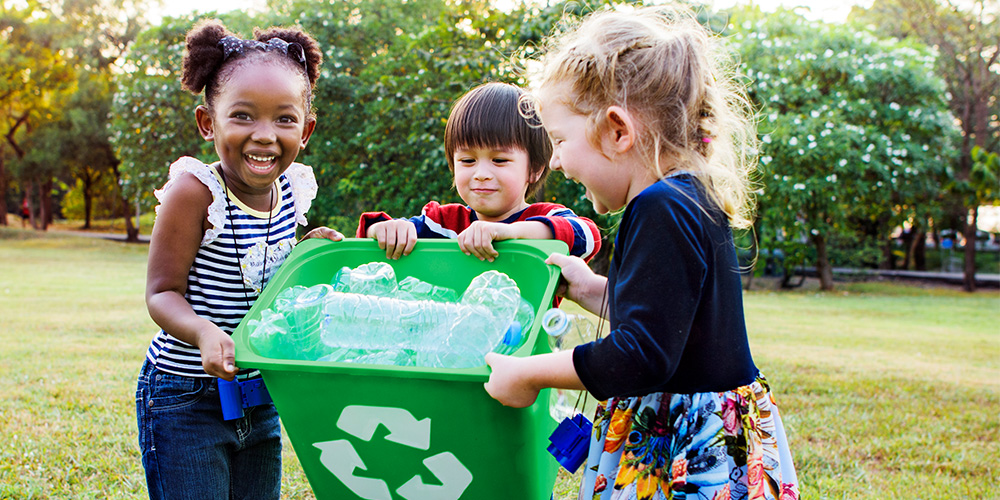Among the many hardships of 2020, feelings of loneliness and social isolation have soared and, along with them, the risk of depression, anxiety, and poor health outcomes. Humans need connection, and in light of the difficulties of this year, they need help too.
As a teacher, you know that your students grow when they receive help, but perhaps more dramatically, they grow when they give it too. One study found that nearly half of volunteers become volunteers simply because an organization asked them. Now is a great time to ask your students to serve others, and in this article, we’ll show you how.
Classroom Service Projects Step-By-Step
Planning a classroom service project can feel just as overwhelming as planning a field trip. It’s similar to a field trip in that you might need to contact an outside organization, get permission and help from parents, arrange transportation, etc. But in many other ways, a service project is quite unique, as students should be the main drivers in creating and executing the heart of the project.
Here is a step-by-step guide for planning a great service project, compiled from Learning to Give, Michigan State University, and New Jersey City University:
- Give your students a voice. It’s important that students not view a service project like an obligation or another homework assignment. Make sure to give your students a sense of ownership by asking for their input on choosing and planning the project.
- Evaluate the community need. The balance to giving your students a voice is to make sure they’re meeting a true need. Help them broaden their view of the world by exposing them to real problems and encouraging them to use their time, empathy, and creativity to help find solutions.
- Recruit additional support. You don’t have to do everything on your own. Your class’s project idea might involve skill sets outside of your wheelhouse (e.g., a gardening project that requires the expertise of a farmer or greenhouse owner). Your students will benefit from collaborating with parents and community volunteers to make a big impact.
- Plan the project with student strengths in mind. No two students have the same strengths, and to make a service project truly successful, make sure to assign every student a task they will excel in. For example, an athletic student might be happiest moving supplies or running messages between stations; a talkative student might enjoy communicating with members of the community; and a detail-oriented student might do best organizing inventory.
- Deliver the service. No matter what service project you choose, make sure students take the lead as much as possible. Your role is to facilitate and supervise the activity, but students should feel like it’s their project and its success depends on them.
- Reflect and tie the project into the curriculum. Students will learn a lot in the midst of serving. But the surest way to make these lessons stick is to take time to reflect and make connections to what students are learning in class. For example, if you do a car wash or bake sale to raise money for a wildlife preservation, you might read books or do a science project related to the animals you helped.
Ideas for Classroom Community Service Projects
As we discussed in the last section, it’s important to let your students drive the service project. However, you don’t have to start from scratch. Several organizations are dedicated to helping students get involved in their communities, and they offer great ideas and resources to help teachers get organized. For example, Youth Service America hosts nationwide service days throughout the year, and the Random Acts of Kindness Foundation has tons of ideas for shorter activities you can do anytime, often from the comfort of your classroom (a great perk during the pandemic).
To get you started on planning your project, here are some ideas you can use with almost any age group. Note that some of these ideas may have to wait until after the immediate dangers of COVID-19 have passed, or they may require some modifications to accommodate social-distancing restrictions.
Kind notes or comments: These days, it’s all too easy to write nasty or critical comments about other people’s businesses, creative work, ideas, or even physical appearance. Give your students a chance to spread some kindness instead by having them write a positive letter, blog comment, or social media post about something that’s important to them. For younger students, they might write to a relative, the author of their favorite book, or an actor or musician they admire. Older students might leave a positive review on a restaurant or service they enjoy, or write to a politician they think is doing a good job.
COVID-19 Consideration:
This activity is perfect for schools that are 100% virtual because it requires no in-person contact.
Spending time with the elderly: Seniors in nursing homes often suffer from loneliness and feelings of disconnection (now more than ever). Your students are sure to brighten their day. Students might practice their reading skills by reading aloud to the elderly, or do an arts-and-crafts project to make cards or decorations for them. Older students might interview seniors about their lives and share what they learned about their careers, families, or different eras in history.
COVID-19 Consideration:
Given that the elderly are a high-risk population for COVID-19 complications, this activity may not be possible right now. You might consider working with the nursing home staff to set up Zoom sessions, or if you want to try to arrange something in person in the future, be sure to check local health ordinances and recommendations first.
Park and public area cleanups: Environmental responsibility is an essential value to instill in students. Large-scale clean water or clean air projects might be beyond the scope of many school service projects, but you can take this as an opportunity to serve your local community. With very few supplies, you can have a workday cleaning up a local park or even outdoor spaces at your school. Depending on funding availability, you could also plant trees or flowers.
COVID-19 Consideration:
Because this activity is outdoors, it offers a great opportunity to breathe fresh, nonrecycled air and easily social-distance while still working together.
Food and donation drives: There are tons of material needs out there that your students can help fill. For example, you might host a donation drive to collect nonperishables for the food bank, toys and baby items for the local women’s shelter or refugee center, books for underprivileged students, or clothes and blankets for the local homeless shelter.
COVID-19 Consideration:
This is another activity that might be easier to pull off while social distancing. Make sure to check with your local health department about whether items need to be left in isolation for a time to limit the spread of the virus.
Meal prep and delivery: Food drives are great, but if you have an opportunity to prepare and serve a meal, that will help your students directly see how their work helps others. Examples of places you might deliver a meal or baked goods include hospitals, nursing homes, refugee families, homeless shelters, or women’s shelters.
COVID-19 Consideration:
Unless you can ensure appropriate sanitation practices, this service project may have to wait until the pandemic subsides.
Tutoring and mentoring: As the adage goes, one of the best ways to learn is to teach. Older students can benefit immensely from tutoring younger students (and vice versa). But tutoring doesn’t have to just be one way. One school did an ongoing cultural immersion project in which seventh- and eighth-grade students taught first-graders about different cultures through creative presentations. Meanwhile, the first graders learned basic greetings in the languages from these cultures and taught the words to their older counterparts.
COVID-19 Consideration:
Some schools are currently limiting how much students can mingle outside of their own grade level or cohort. If that’s the case at your school, consider hosting these tutoring sessions on Zoom.
From Self-Focused to “How Do I Change the World?”: A Service Project Case Study
Statistics from the early 2000s show that Florida was consistently the most dangerous state in the union for homeless people. Violence against the homeless too often turned deadly, and the attackers were consistently young men in their teens and twenties.
The students at Evans High School decided to do something about it. In 2012, dozens of members of the school’s Beta Club went out into the community to interview homeless men, women, and children about their life experiences and learn more about struggles and issues related to homelessness. They collected these stories and published a book about them, titled Everyone Has a Story to Tell. The students were so moved by what they learned that they later made a documentary about homelessness and how people can help.
As part of this process, the students learned valuable, marketable skills about communication, writing, publishing, video production, and more. But perhaps more importantly, their principal reports that these students from a high-poverty area learned that the world is bigger than their community, and by serving, they got a deeper sense of humanity and what the world’s all about.
Watch the full video about their service project here:
Molding Better Citizens Over the Long Haul
Students often feel like there’s not much they can do to change the world. After all, they’re just one person, and a young one at that. However, when you show students how they can change someone’s day through the power of service, they’ll be inspired to use their time and talents to make the world a better place than they found it.












